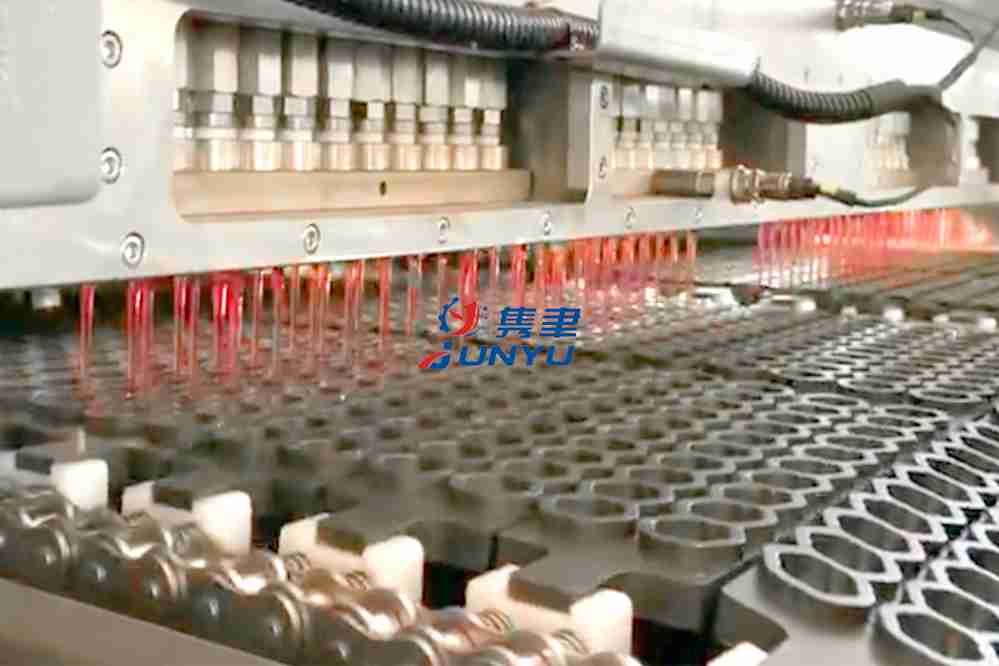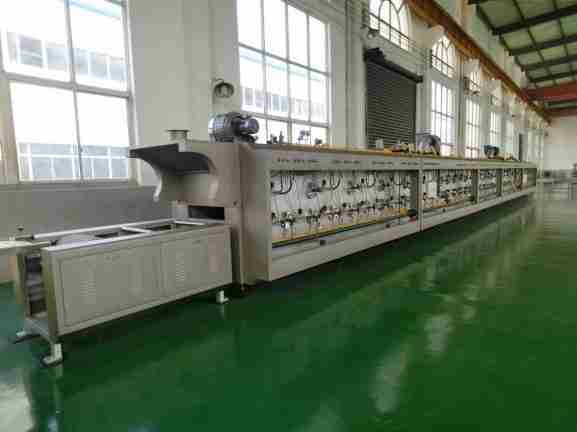The gummy bear, a staple of candy aisles worldwide, is known for its iconic size and shape. However, the versatility of gummy bear machines allows for a range of sizes, from the tiny to the tremendous, catering to various consumer preferences and applications.
This article delves into the different sizes that a gummy bear machine can produce.
1. Standard Size
The most common size for gummy bears is the standard size, which is typically about an inch (2.5 cm) in length. These gummies are perfect for snacking and are the size most people envision when thinking of gummy bears.
2. Miniature Gummy Bears
For those who prefer a smaller, more bite-sized treat, gummy bear machines can produce miniature gummy bears. These tiny candies are great for portion control and can be a fun addition to candy buffets or party favors.
3. Jumbo Gummy Bears
On the opposite end of the spectrum are jumbo gummy bears, which can be several times larger than the standard size. These large gummies can be a centerpiece for a dessert plate, a prize for kids’ events, or simply a delightful challenge for those who love a good chew.
4. Gummy Worms and Other Shapes
While gummy bear machines are designed to produce bears, they can also manufacture other shapes, such as gummy worms, which come in various lengths. These elongated gummies can be a fun alternative to the traditional bear shape.
5. Custom-Sized Gummies
Some gummy bear machines offer the capability to create custom-sized gummies. This allows manufacturers to cater to specific market demands or create unique products for special occasions.
6. Layered Gummies
Advanced gummy bear machines can produce gummies with multiple layers, offering a gradient of sizes or a combination of flavors and colors in a single piece. This technique can result in gummies that start small at the top and gradually increase in size.
7. Gummy Pellets
For uses in baking or as a component in other food products, gummy bear machines can produce small, uniform gummy pellets or beads. These tiny gummies are versatile and can be used in a variety of applications.
8. Large-Scale Production Sizes
In industrial settings, gummy bear machines can be scaled up to produce large quantities of gummies in a range of sizes suitable for mass distribution and sale in retail outlets.
9. Small-Batch Sizes
Conversely, some machines are designed for small-batch production, allowing for artisanal manufacturers to create unique, smaller quantities of gummies in various sizes without the need for large-scale equipment.
10. Size Variations for Different Markets
Different markets may have different preferences for gummy bear sizes. For example, the European market might favor larger gummy bears, while the Asian market might prefer smaller, more intricately flavored options.
Conclusion
The flexibility of gummy bear machines in producing a variety of sizes is a testament to the innovation and adaptability of candy-making technology. Whether it’s for a fun-sized snack, a jumbo treat, or something in between, gummy bear machines can cater to a wide array of consumer desires. The next time you pick up a bag of gummy bears, consider the machine that crafted them in the size perfect for your taste.







